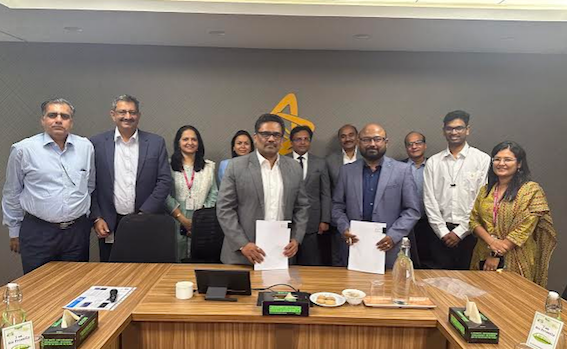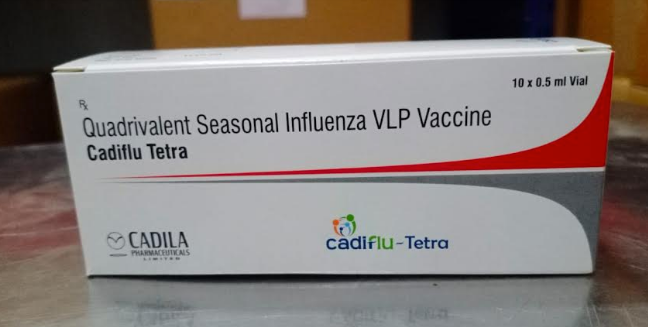Transgenic crops gaining flavor worldwide
10 February 2003 | News
The flavor of the season is trasngenic crops. The genetically modified (GM)crops, first introduced by the American company, Calgene in May 1994, has come a long way from the days of 'Flavr Savr', the delayed ripening tomato. At the last count, 15 GM or transgenic crops, where modified genes have been introduced from an outside source, are cultivated widely in the world. They cover a wide range of products and include maize, soybean, cotton, tomato, potato alfalfa, petunia, rape/mustard, rice, wheat, mustard, beet, barley, Bengal gram, cabbage, papaya and tobacco.

In the latest study on transgenic crops, released by an independent organization International Service for the Acquisition of Agri-biotech Applications (ISAAA) in mid –January 2003, the total cropped area having transgenic crops increased to 52.6 million hectares (mha) in 2001. From 2000-01, the transgenic cropped area has jumped by 8.4 mha or 19 percent from 44.2 mha. After a slow start since the introduction of 'Flavr Savr', areas using transgenic crops increased marginally to 1.7 mha in 1996. It increased modestly to 11 mha in 1997. From 1998, adaptation rate has increased significantly to reach the current high figure.
According to ISAAA data, herbicide-tolerant soybean is the most dominant transgenic crop covering 33.3 mha mostly in seven countries including the US, Argentina, Canada, Mexico, Romania, South Africa and Uruguay. Soybean represents 63percent of the global trasngenic
cropping area followed by corn (9.8 mha or 19 percent), transgenic cotton (6.8 mha or 13 percent) and canola (2.7 mha or 5 percent). The dominance of GM crops over conventional crops varies significantly. While 46 percent of all soybean cultivated in the world (33.6 mha out of 72 mha) is trasngenic, its share is the lowest for canola.
The area covered by transgenic canola represents just seven percent of the total 140 mha. In cotton,
the transgenic variety covers 20 percent of the cropped area (6.8 mha out of 34 mha) and for corn it is 11 percent (2.7 mha out ot 25 mha).
In India all the attention is focused on the transgenic cotton--Bt cotton--allowed for commercial use for the first time in March 2002. The partial results of the first cropping season have not been very encouraging. Experts' attritbute this to other external factors such as poor monsoon and water stress which have resulted in yields of all crops. More detailed studies will be available when the full results are available.
Global data on Bt cotton provided by ISAAA chairman Dr Clive James indicate yield increase from five to ten percent in China, 10 percent or more in the US, and 25 percent in South Africa. “ Countries that have introduced Bt cotton have derived significant and multiple benefits--these include increased yield, decreased production costs, a reduction of at least 50 percent in insecticide applications, resulting in substantial environmental benefits to small producers, and significant economic and social benefits,� said
Dr James.

With the entry of Bt cotton in India in 2002, global attention has turned to how Indian farmers will take
to trasngenic crops. There are many strong advocates for these crops. Senator Christopher Bond, chairman of the Indo-US Biotechnology
Alliance was in India in December 2002 to spread the message of transgenic crops. At an interaction with top biotechnology
companies and professionals in New Delhi pointed out that Americans have been the 'guinea pigs' of the
world for the past seven years in eating and tasting all trasngenic food products.
“ I can say with certainty that no a single stomachache case has been reported from eating GM foods,�
he emphasized. Representing the US farm belt, the senator indicated that the
savings from less pesticide use with GM crops was about $90 per acre.
Another strong supporter is thewell-known plant biotechnologist,Dr Roger N Beachy, president of the Donald Danforth Plant Science Center, Missouri. He said for 50 years, people having been consuming food products treated with radioactivity. There are few problems. In fact, the benefits faroutweigh potential dangers, he said.
Even as the debate continues many more GMfoods are in the pipeline. According to a document prepared by the New Delhi-based Biotech Consortium India Ltd (BCIL), some of the future products are: soybean and canola oils containing more unsaturated fatty acids, higher yielding peas that remain sweeter longer, smaller seedless melons, bananas
and pineapples with delayed-ripening qualities, bananas resistant to fungi, higher protein rice, tomatoes with higher antioxidant content, fruits and vegetables with higher level of vitamins. Some other products are crops tolerant to drought, floods, salts, metals heat, and cold, safer foods through reduction of allergenic proteins, edible vaccines, nitrogen fixing crops and plants that produce latex.
In India, the first transgenic plantexperiment was conducted in 1995 in Gurgaon, Haryana, on a variety of
mustard, Brassica juncea incorporating the Bar gene regulated with some promoter elements and linked with Barnase and Barstar genes regulated with floral tissue-specific promoters. Currently field trials of transgenicmustard, and tomato are on
in different locations. Some 12 companies and institutions are doing the development work. These include, the Central Tobacco Research Institute, Bose Institute, Kolkata, Tamil Nadu
Agricultural university, Coimbatore, Delhi University south campus, Indian Agriculture Research Institute sub
station in Shillong, the Central Potato Research Institute, Shimla, Pro Agro, Gurgaon, Mahyco, Mumbai, Rallis
India Ltd, Bangalore, Jawaharlal Nehru University, New Delhi , Indo America Hybrid Seeds, Bangalore
and the International Crop Research Institute for the Semi Arid Tropics,
Hyderabad.
Indian farmers and consumers have been in tune with the rest of the world in adapting the modern technologies, products and food items. Will they
follow the global trend in transgenic crops too?
N Suresh

















